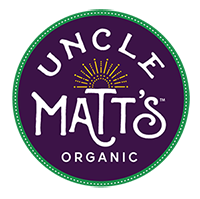How to Add Oomph to ‘Organic’
The organic industry has gone wild in the last decade, but you wouldn’t now it at the Department of Agriculture.
Despite year after year of double-digit growth, organics receive a pittance in financing and staff attention at the department, which is
responsible for writing regulations about organics and making sure that they are upheld.
The National Organic Program, which regulates the industry, has just nine staff members and an annual budget of $1.5 million. A Florida real estate developer named Maurice Wilder received more than that in farm subsidies in 2005, some $1,754,916, to be exact, according to a subsidy database maintained by the Environmental Working Group.
Other parts of the Department of Agriculture spend roughly $28 million or so a year on organic research, data collection and farmer assistance. It may sound significant, but the department spent far more than that, $37 million, subsidizing farmers who grew dry peas in 2005. (The farm value of dry peas is about $83 million a year. Consumers spend more than $14 billion a year on organic food, up from $3.6 billion in 1997.)
It’s not entirely surprising that organics are such a low priority at the department and in Congress. Both the agency and farm-state members of Congress are reliable cheerleaders for industrialized agriculture, and Big Ag has often viewed organics with suspicion, if not outright disdain.
But the Department of Agriculture is crucial to the future success of organics, which depends on the credibility of the U.S.D.A. organic seal.
If you are shelling out $6 for a gallon of organic milk, you deserve to feel confident that the cows that produced the milk weren’t shot full of growth hormones or fed soybeans sprayed with pesticide.
Lately, however, the credibility of organic products has been under nearly constant attack.
Hoping to cash in on the organic trend, all sorts of entrepreneurs, overseas farmers and conventional food companies have jumped into the business and are pushing the definitions of organic into new and questionable territory.
What began as a label for produce and dairy products is now being slapped on frozen dinners and macaroni and cheese, and the National
Organic Program is constantly being asked to define standards for other commodities like fish and yeast.
As organic processed foods have proliferated, companies have pushed the Department of Agriculture to approve the use of non-organic ingredients like food colorings, hops and sausage casings.
Huge organic dairies have been built to replicate the low-cost methods of conventional factory farms, but in doing so, some have skirted an organic rule that requires that cows have access to pasture.
Most important, perhaps, as demand for organic foods has outstripped supply, an increasing amount is being imported from overseas, particularly China, where regulatory oversight clearly has some problems.
No one knows exactly how many organic products are being imported to the United States because, amazingly, the federal government doesn’t keep track. But everyone agrees that the amount is increasing.
The National Organic Program doesn’t try to verify the authenticity of organics by itself, but instead relies on a network of third-party
certifiers who are required to inspect organic farms and food companies and submit periodic reports.
That still leaves the organic program’s staff with plenty to do. It must write new regulations and shepherd them through the bureaucratic maze at the Department of Agriculture, work with the organic advisory board, review the accreditation of certifiers and help to investigate complaints.
With just nine employees, one of whom performs clerical duties, the National Organic Program would be lucky to effectively oversee the organic industry in Vermont, let alone the rest of the worl“It’s a joke,” said George L. Siemon, who is chief executive of Organic Valley, a Wisconsin-based farmers’ cooperative, and is a former member of the National Organic Standards Board, an advisory board for the National Organic Program. “This is a pitiful amount of money, and we are running into all kinds of trouble.”
Mr. Siemon cited a rash of bad publicity about organics that has suggested that companies were trying to bend the organic rules.
One problem with such a small staff, he said, is that regulations take years to complete because so much work is stacked up. New pasture requirements for livestock, for instance, have been languishing for years.
As for the increase in organic imports from China, Mr. Siemon said: “Maybe everything is great and maybe it’s not. But it would be great if the U.S.D.A. had done a lot more work over there to find out what’s going on.”
Caren Wilcox, executive director of the Organic Trade Association, an industry group, agreed that the National Organic Program needed far more funding. Noting the double-digit growth of organics in the United States, Ms. Wilcox said in an e-mail message, “We need to be sure that N.O.P.’s resources are sufficient to keep up with that growth.”
She said in an interview that she felt “comfortable with their work on oversight, but I would feel more comfortable if they weren’t so stretched. They definitely need more.”
Kenneth C. Clayton, an associate administrator at the Department of Agriculture who oversees the National Organic Program, declined to
comment specifically on the budget. But, he said: “Any additional resources we can get will be helpful. We have lots of work to do.”
The Bush administration’s proposed budget for 2008 calls for a major increase in funds for the National Organic Program, pushing its overall budget to about $2.7 million. The House version of the farm bill, passed late last month, authorizes more than $60 million a year in funding for various organic programs, including research and help for farmers who convert to organic methods.
Realistically, though, there’s little chance that $60 million will be spent each year because only a fraction of the money is mandatory spending.
Whether organic foods are healthier than conventional products is open to debate. But that doesn’t mean Congress should give short shrift to research and regulation of organics. The growing popularity of organic products helps small farmers stay in business. They’re also better for the environment and help ease farmers away from crops that require government subsidies.
Besides, voters like organic food better than dry peas.
by Andrew Martin

